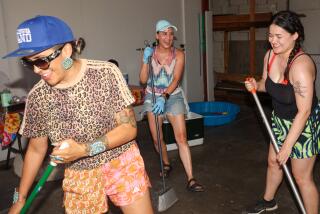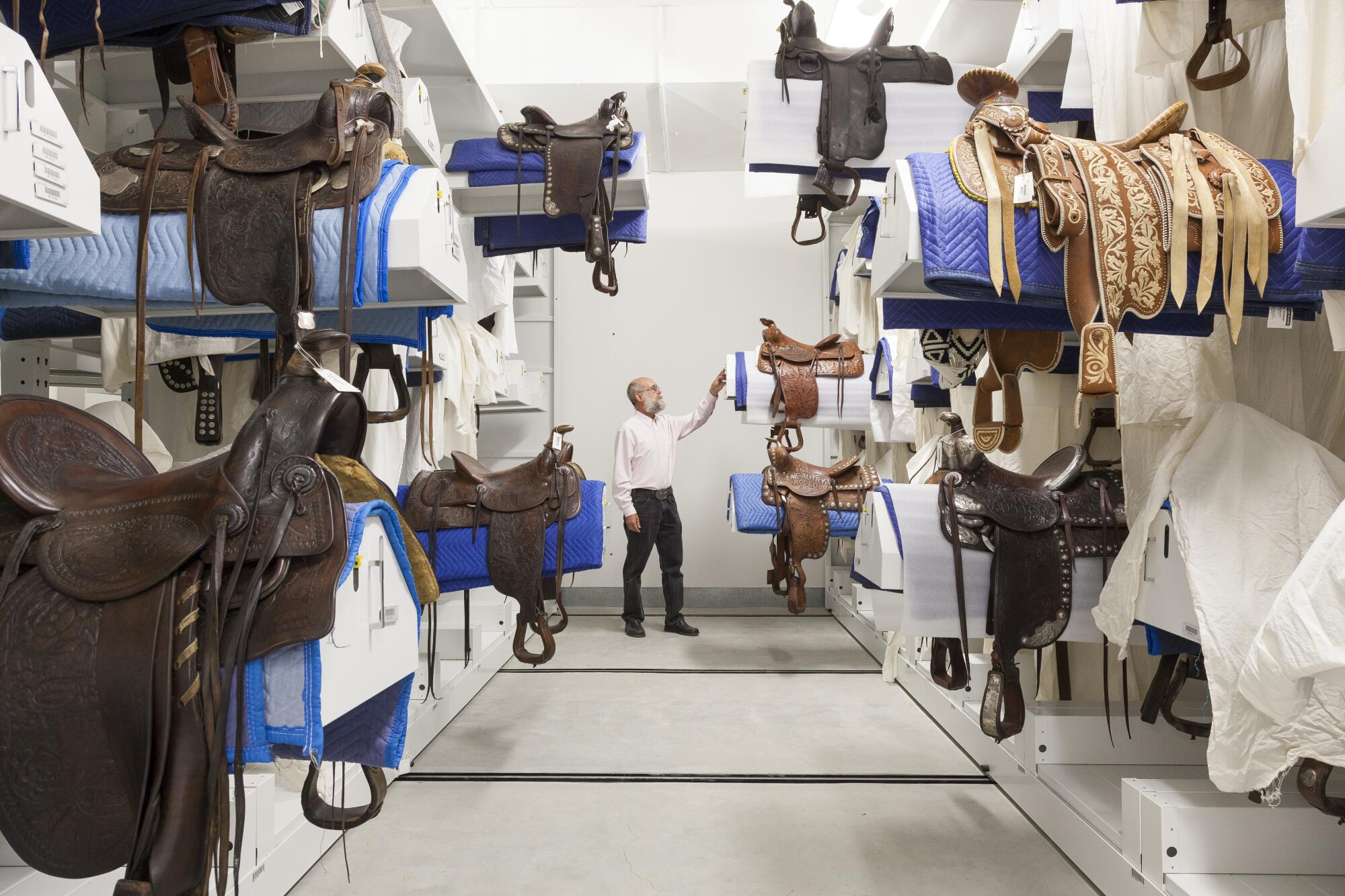
- Share via
We’re climbing up the old Southwest Museum tower, a 1914 Mission Revival gem that’s now closed to the public due to fire safety issues. The narrow, red-painted staircase, seven stories high, winds around and around, with each level bearing a small, dusty storage area, mostly empty. At the tippy top is an outdoor terrace overlooking lush Mount Washington and northeast Los Angeles on one side and a crisp silhouette of the downtown L.A. skyline on the other.
Until recently, these storage nooks were crammed with boxes of objects from the museum’s collection, which includes ancient ceramics, woven baskets, rare textiles and beaded ceremonial regalia. But no longer.
The Autry Museum of the American West merged with the Southwest Museum of the American Indian in 2003 and now stewards its vast collection of Indigenous art and artifacts, the second-largest of its kind in the U.S. next to the Smithsonian’s National Museum of the American Indian.
Autry President Stephen Aron peers over the edge of the scuffed railing, looking down into the snail-shell-like epicenter of the staircase. It’s a dizzying view, a steep vortex plummeting more than 100 feet.
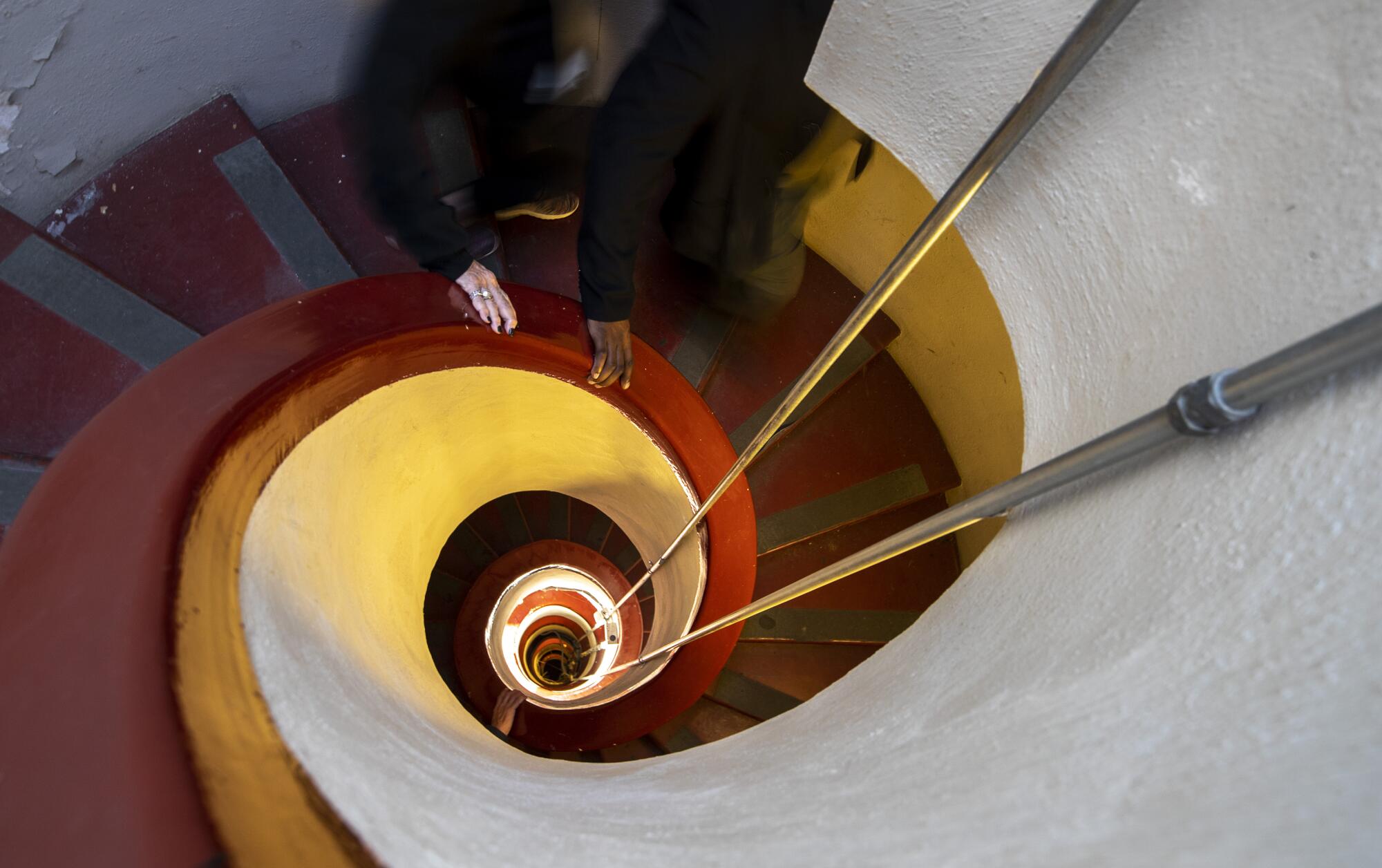
“When you look down, all these levels had collections piled on them,” he says of the Southwest Museum’s treasures before the Autry relocated them. “I just remember seas of boxes and not knowing where things were.”
He does now.
The Autry Museum’s new Resources Center, a $32-million, 100,000-square-foot facility in Burbank, opened in late October. It was built to house, conserve and otherwise care for both museums’ collections — more than 600,000 artifacts, artworks and library materials. Designed by the L.A. firm Chu-Gooding Architects, the building project has been more than a decade in the works, spearheaded by former longtime Autry Museum President W. Richard West, Jr., who retired last year. (West was the founding director of the Smithsonian’s American Indian museum.) Now the Southwest Museum’s collection is almost entirely tucked away in a state-of-the-art, climate-controlled and fire-safe environment.
The Resources Center is also a research destination open by appointment to scholars, artists, tribal representatives and others to study the invaluable objects it houses. And perhaps most important, it’s a space meant to serve as a conduit for collaboration with Native communities, who see the important items stored there as living objects imbued with the spirits of their ancestors. The Autry doesn’t see itself as “owning” these objects as much as “jointly stewarding them” with their communities of origin, Aron says.
As such, the gleaming facility — a renovated former office building — features soaring windows in its lobby that overlook a ceremonial garden designed by Native-owned Costello Kennedy Landscape Architecture. The firm collaborated with cultural educators from Indigenous Southern California tribes. It’s a contemplative space for Native guests to hold ceremonies and reconnect with their ancestral objects. The garden contains native California grasses traditionally used in basket weaving as well as strawberry vines and elderberry trees that, when they bear fruit, can be harvested by Native visitors. There’s a meditative water feature and a circular ceremonial altar where offerings can be left by tribal community members.
“The history between museums and Native people has been a less than honorable one. There’s always been this tension,” says Joe D. Horse Capture, Autry’s vice president of Native collections. “The idea of creating a facility where Native people can engage with works their ancestors created, and work collaboratively and have access — which they haven’t had for many, many years — I think is really, critically important to the cultural heritage and also the Autry’s relationship with tribes.”
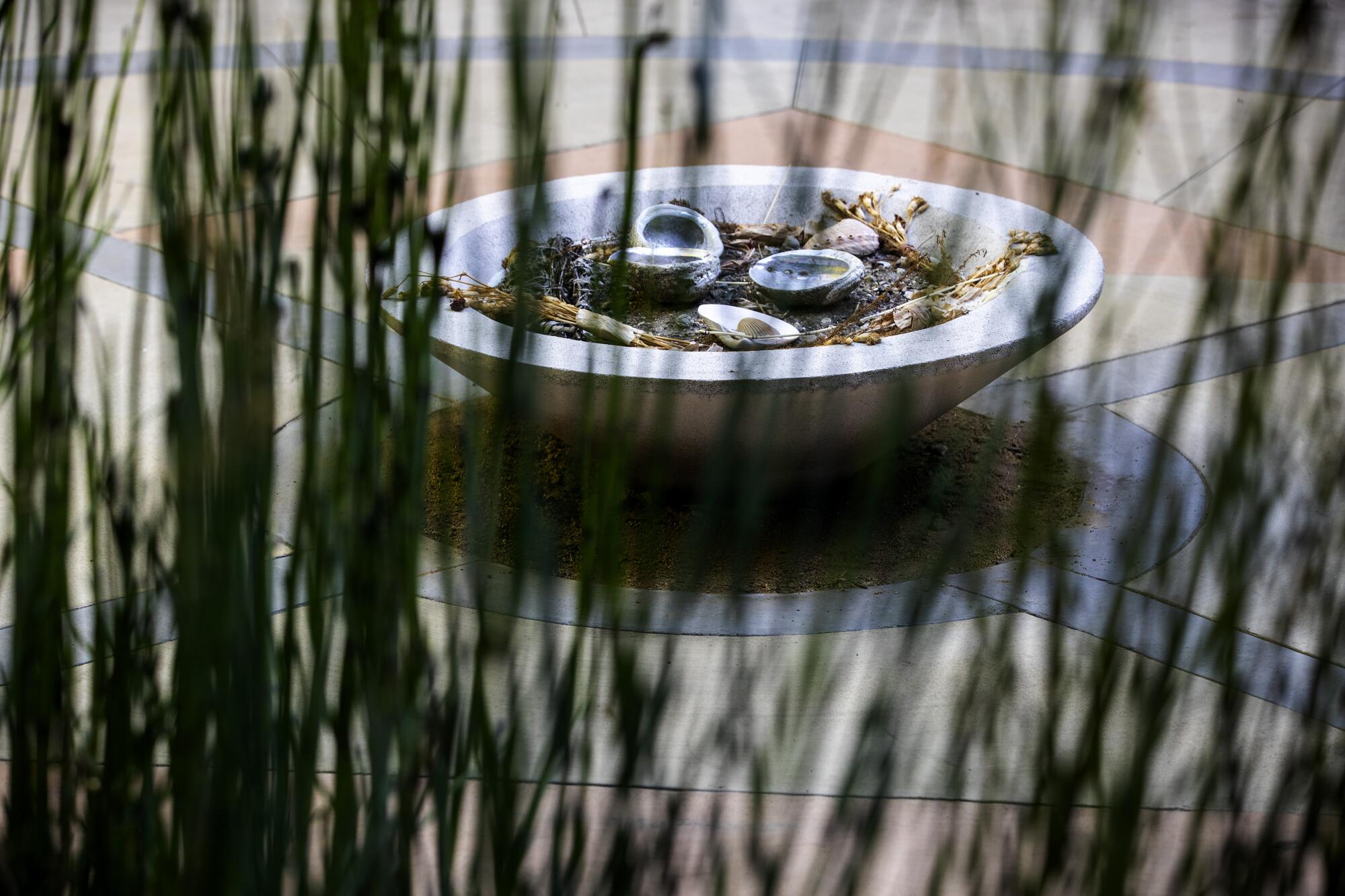
The Southwest Museum is L.A.’s oldest museum, founded in 1907 by Charles Fletcher Lummis. Since 2003, the Autry has spent about $20 million conserving and caring for its collection and historic grounds near the Mount Washington-Highland Park border. Absorbing the collection has allowed the Autry, which had previously featured a more Eurocentric take on the American West, to tell a more nuanced, historically accurate and inclusive story.
But the more than 100-year-old Southwest Museum building — which the National Trust for Historic Preservation named a “national treasure” in 2015 — has been problematic for exhibitions and isn’t equipped to store art properly. Storage rooms were overcrowded, with poor climate controls, and there are water leaks and pest infestations. The building is also in need of extensive earthquake retrofitting. It’s been in only partial operation since at least 2003. Until recently, only a small area of the museum was open to the public on Saturdays. The Southwest Museum closed completely in September.
“The standards were different [decades ago], the understandings were different, but they built a place that was a showplace for Los Angeles in the era that they did,” Aron says, stressing the importance of context. “And the practices that they followed were considered appropriate and proper at the time.”
The Autry estimates that, in order to reopen the site as a museum, retrofitting and renovations would cost more than $100 million. Instead, it’s looking for a new owner to steward the building and grounds, an entity that would use the space for “community benefit.” The Autry, meantime, will continue to care for and exhibit the collection. Aron says there is now “one entity” being vetted — which is vetting costs itself — though he wouldn’t reveal any names.
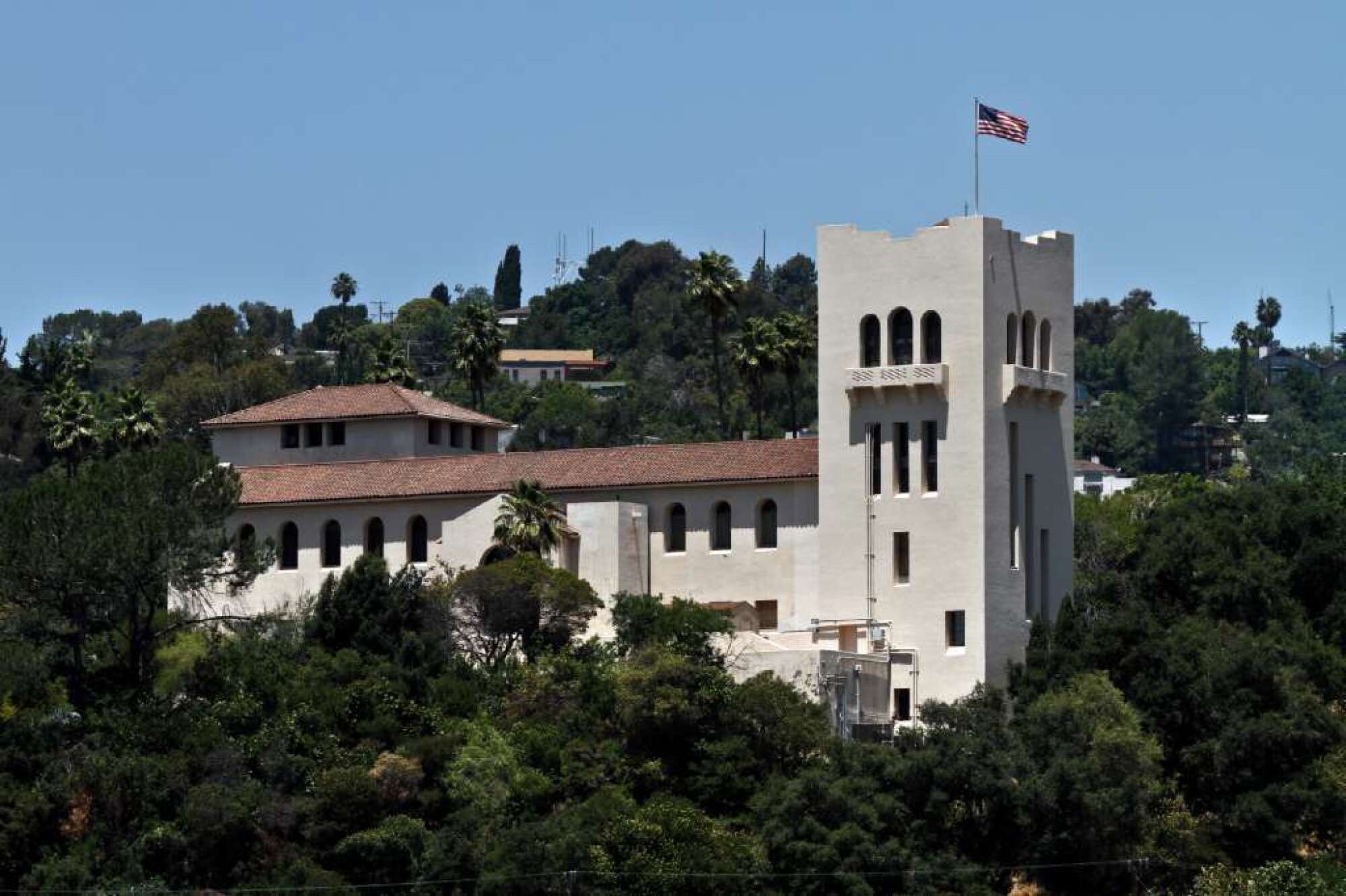
Aron says that “in the history of moves,” the relocation of more than 400,000 often fragile objects from the Southwest Museum to the Resources Center “defies imagination.” The move took more than a decade. Packing alone took more than 12 years, starting in 2004 after the merger and leading to the building’s completion in 2016.
Hundreds of thousands of objects had to be inventoried and barcoded, cleaned and conserved, and stabilized for transport. That meant setting up an onsite conservation lab, photo studio, custom packing area and walk-in freezer at the Southwest Museum. The latter is where organic material, tasty to moths and beetles, were frozen for 10 days at minus-30 degrees to kill pests. It took a year alone to build this temporary preservation project infrastructure.
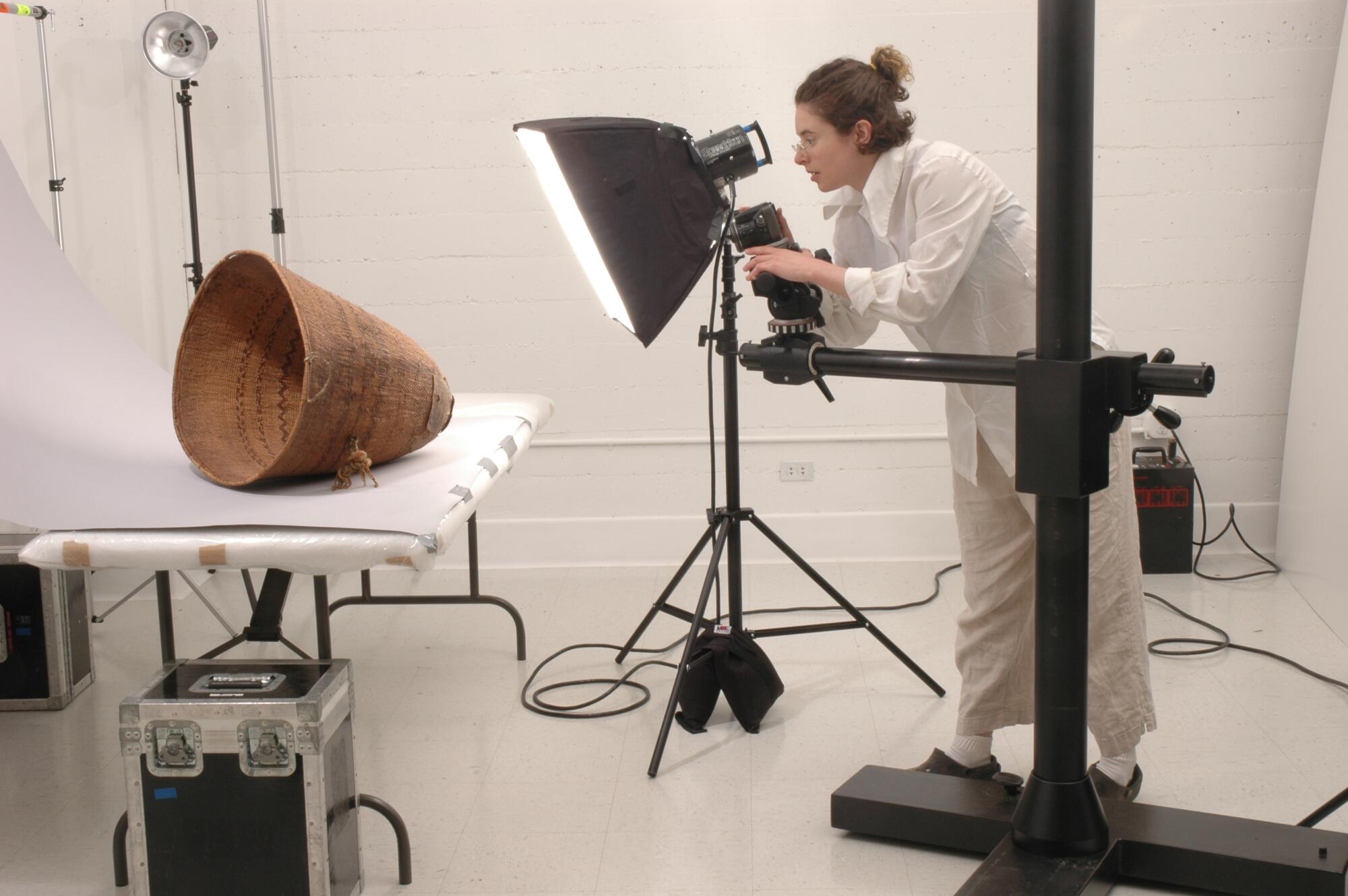
Over the next 12 to 13 years, estimates LaLeña Lewark, vice president of collections and conservation at the Autry, staffers prepped and packed the collection, one object at a time. The tower where the ceramics collection had been housed — 10,381 objects — was the most problematic. Everything had to be carried down by hand, one box or item at a time, with conservators and art handlers moving cautiously down the 3-foot-wide circular staircase. Heavy rains in early 2005 led to the tower roof leaking, and about a dozen staffers executed an emergency evacuation, working for three weeks to relocate the objects, with wet boxes first inspected by conservators.
Staffing at the Autry has ebbed and flowed over the years. At one point, around 2007, just three people were packing the collection, and progress inched forward. By 2010 the museum had 15 staffers on the project.
As the Resources Center was completed in phases, the moving of objects occurred in stages in tandem, starting in 2012. The collections traveled on a special truck with enhanced suspension that reduces vibrations when riding over bumps.
The Autry worked with a consultant from the Gabrielino-Tongva community, who created an advisory committee that acted as a liaison with other Native communities. It reviewed packing and transport methodologies.
“Tribes might have requests, objects that are gender sensitive with regard to handling,” Lewark says.
Nothing got broken or lost in the move.
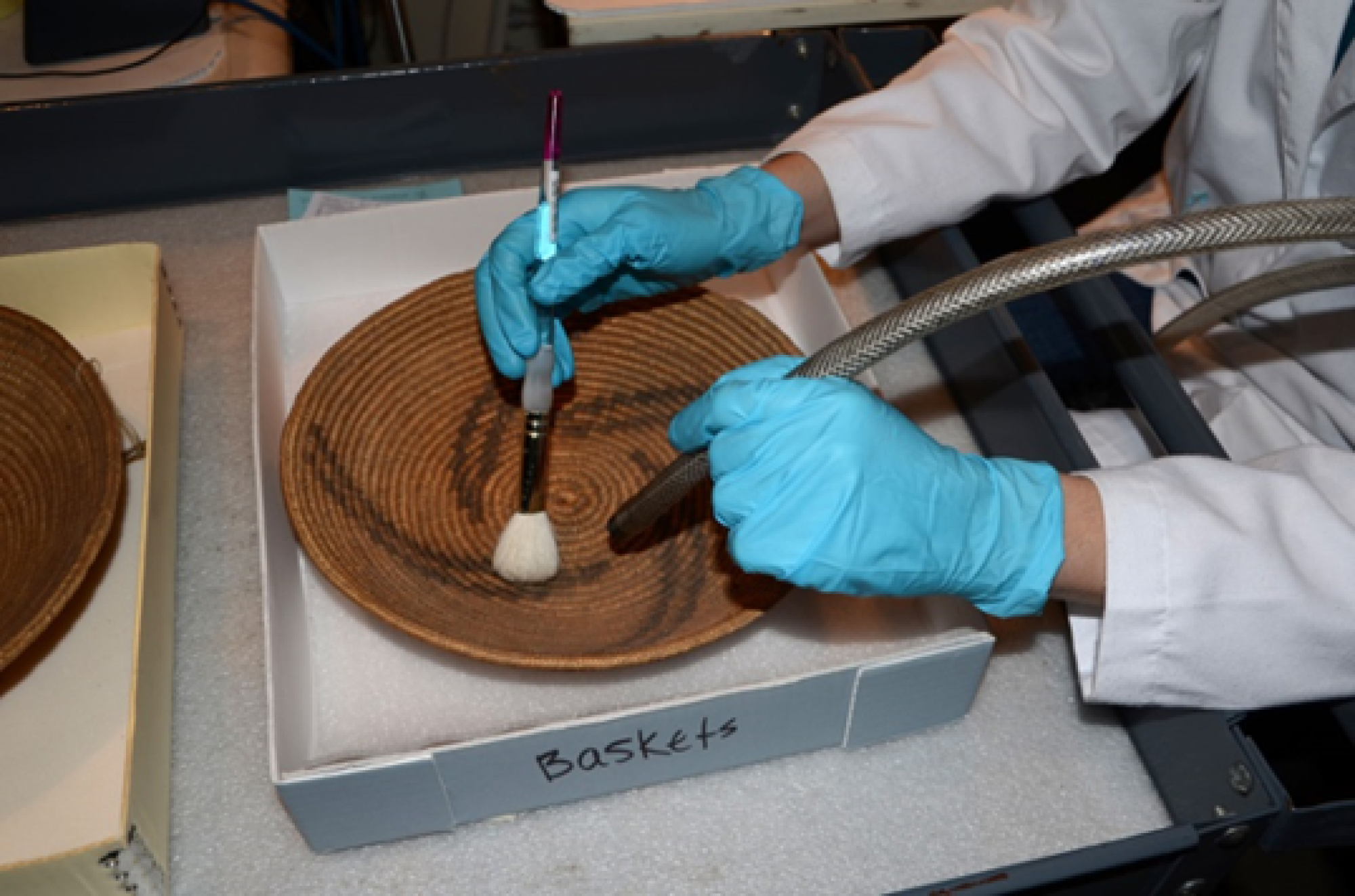
The Autry has been criticized for not showing the Southwest Museum collection often or broadly enough. Lewark points to the history of the move.
“People say, ‘You have it, why isn’t it on display more?’ But it was packed away,” Lewark says. “We’re gradually adding more of the Southwest collection throughout more of our galleries. We’re wanting to do more.”
An exhibition of California Native objects from the Southwest Museum collection called “Waterways” — part of a larger exhibition, “Human Nature” — opens at the Autry later this year. Another future show, “Creative Continuities: Family, Pride and Community in Native Art,” is curated by Horse Capture in collaboration with three contemporary Native artists.
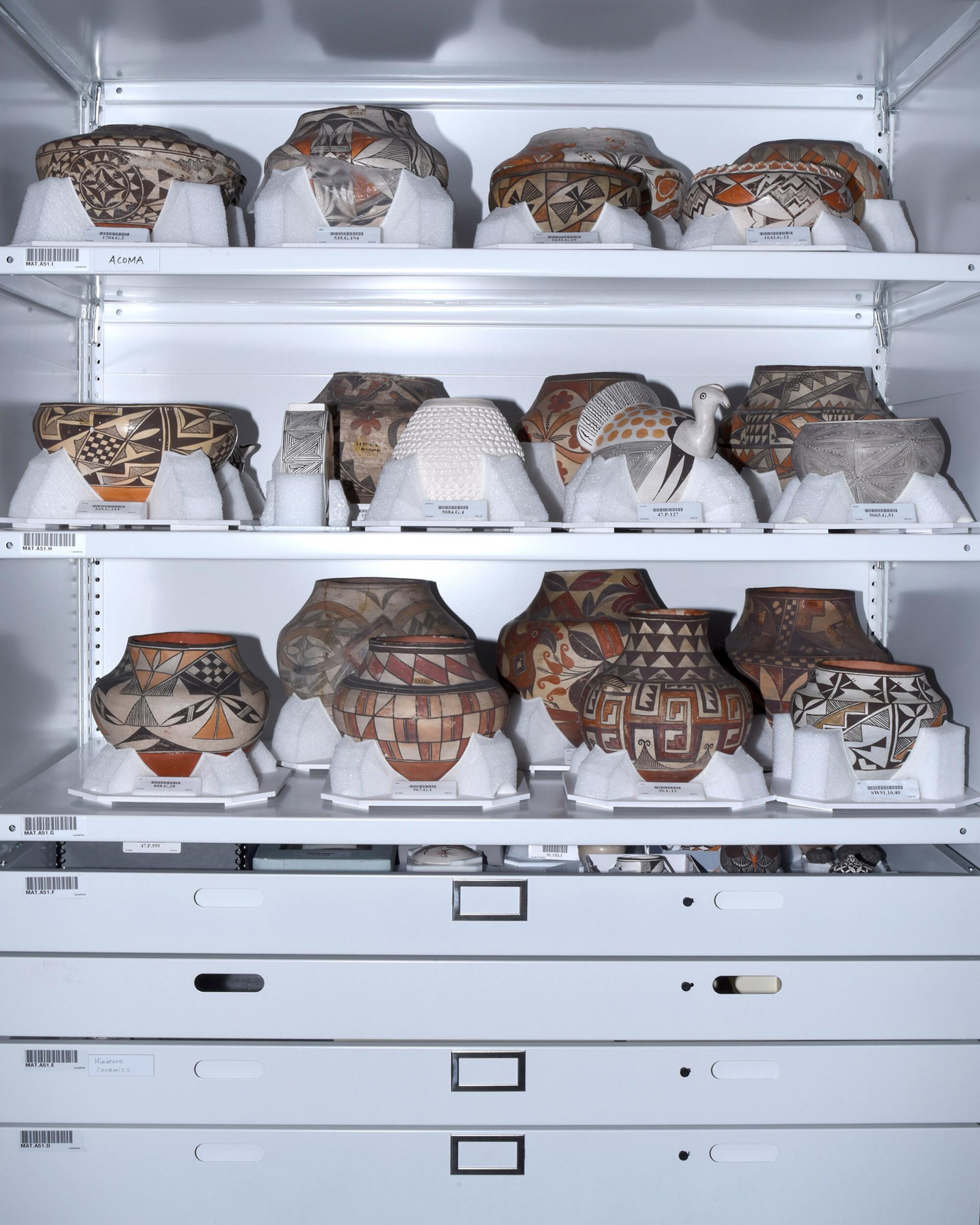
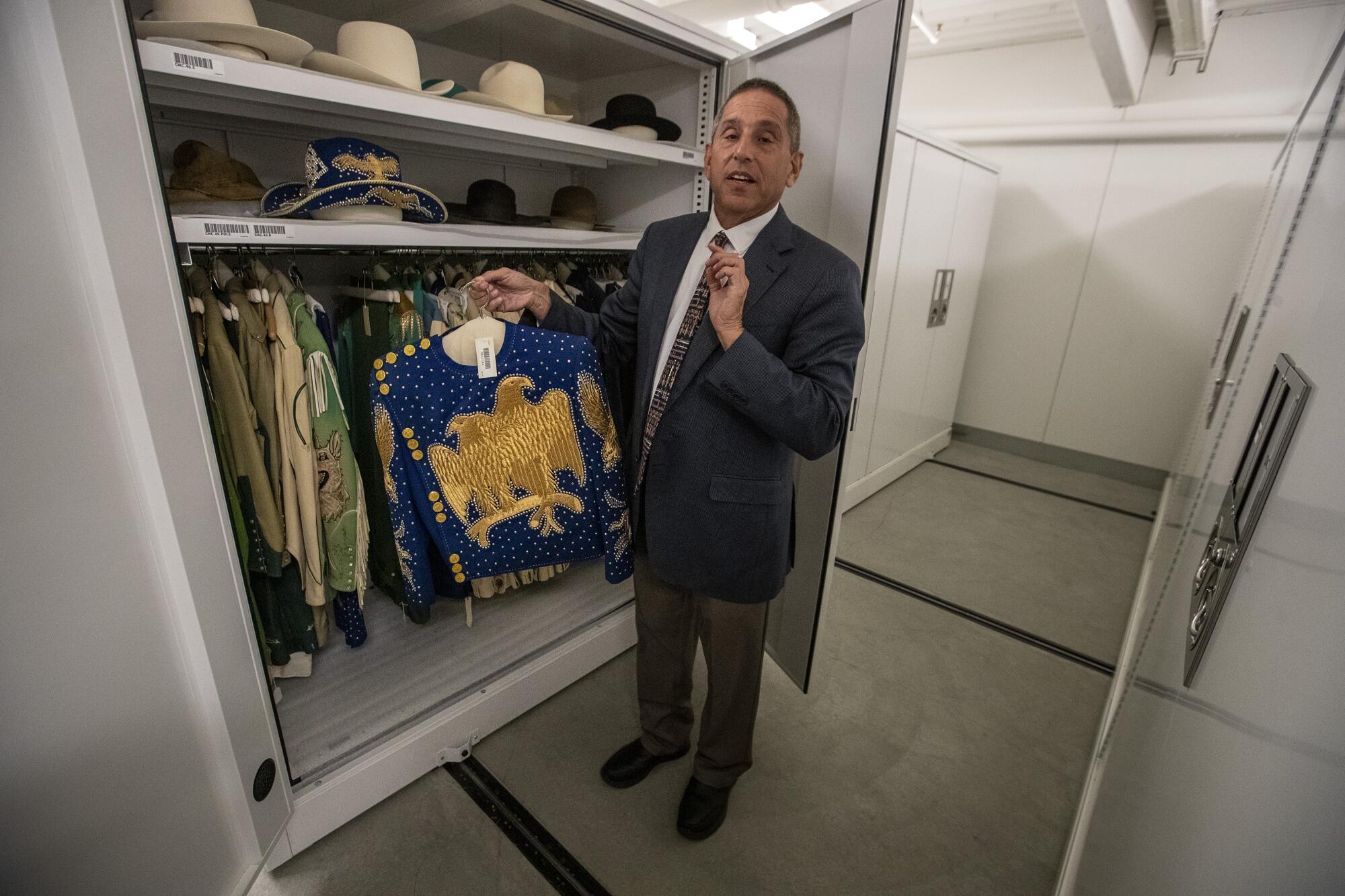
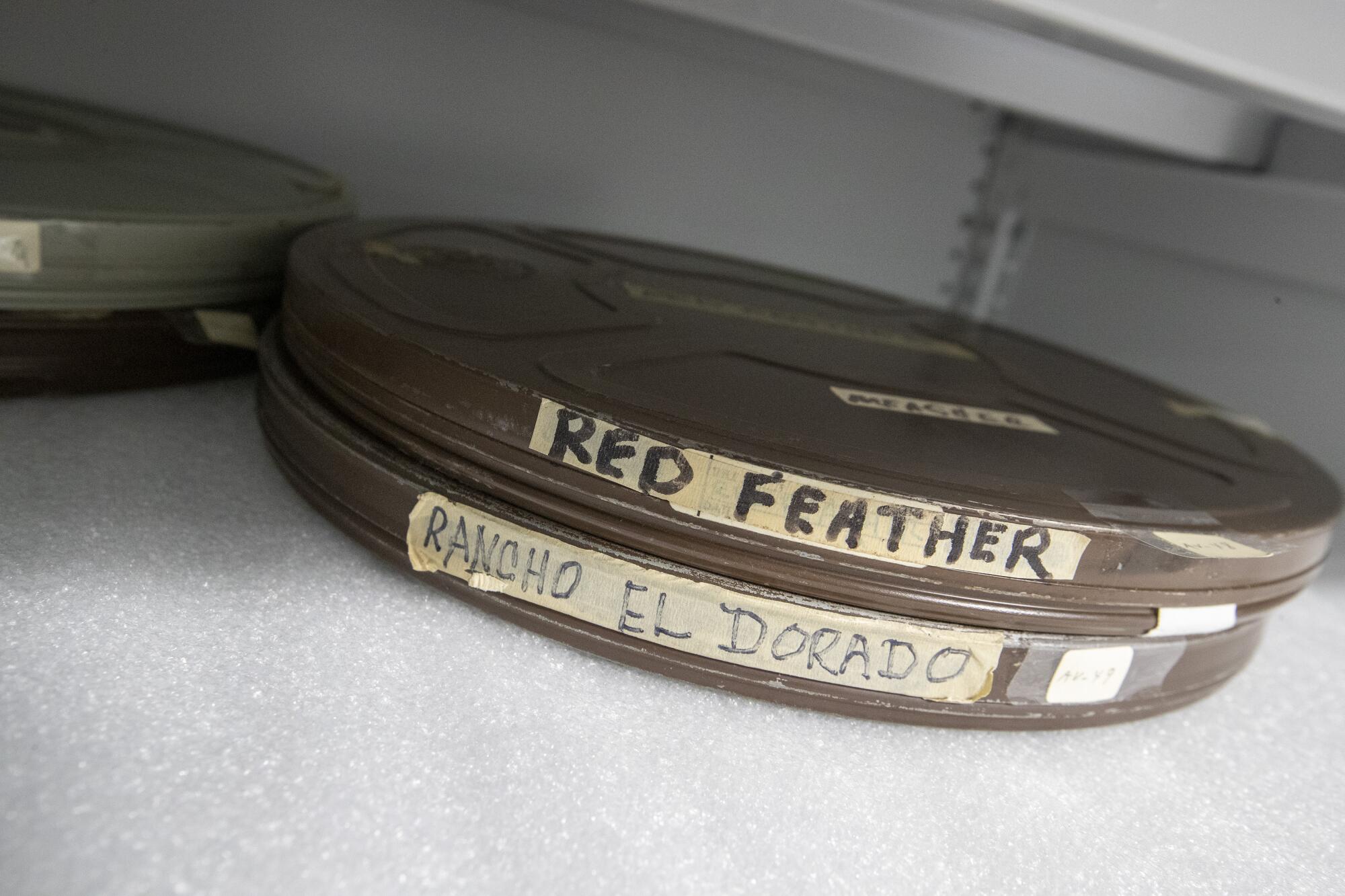
When paintings, rare manuscripts, recordings, old photographs, textiles, ceramics and other objects — both collection items as well as recent donations still being processed — arrive at the Resources Center, they’re inventoried and pass through conservation labs, where they’re inspected before being barcoded and photographed if necessary. Images are digitized and archived in a collections management database; objects are then carefully stored in temperature-, humidity- and light-controlled environments.
There’s a “cool room” and a “cold room,” the former for audio and visual material from different time periods, the latter for color photographs and film. Darkened storage cabinets house costumes and historic clothing. The long, cavernous hallways — which feel somewhat like a public storage facility except for the miniature 19th century stagecoach packed away — are divided by giant roll-up doors to aid with climate control and fire prevention.
Several hundred saddles, mostly from the Autry’s collection, used to be housed on freestanding wood mounts that look like horsebacks and took up much space. Now they’re lined up neatly on sleek metal mounts on rollers. One piece, a more than 150-year-old Native American women’s saddle from the Crow tribe, features elaborate beadwork on the stirrups and around the seat. Another, by “saddle maker to the stars” Edward H. Bohlin, is made of sculpted silver and leather. It’s roughly 225 pounds — pity the poor horse — and belonged to Gene Autry.
Streamlined storage is easy on the eyes, everything squared away in sterile, cream-colored, steel-and-baked-enamel shelving or deep drawers that look like file cabinets. But what it means, practically, is accessibility — which is key to the vision of the Resources Center. Visitors can now more easily find and study the items they’re searching for. The lobby offers a peek into open storage in the archaeological study room and library reading room. The Autry hopes to facilitate long-term loans to Native communities and institutions internationally so that collection items are seen widely.
“One of the challenges for us at the Resources Center is to make sure the collections are opened up,” Aron says, “and opening up means facilitating those kinds of arrangements.”
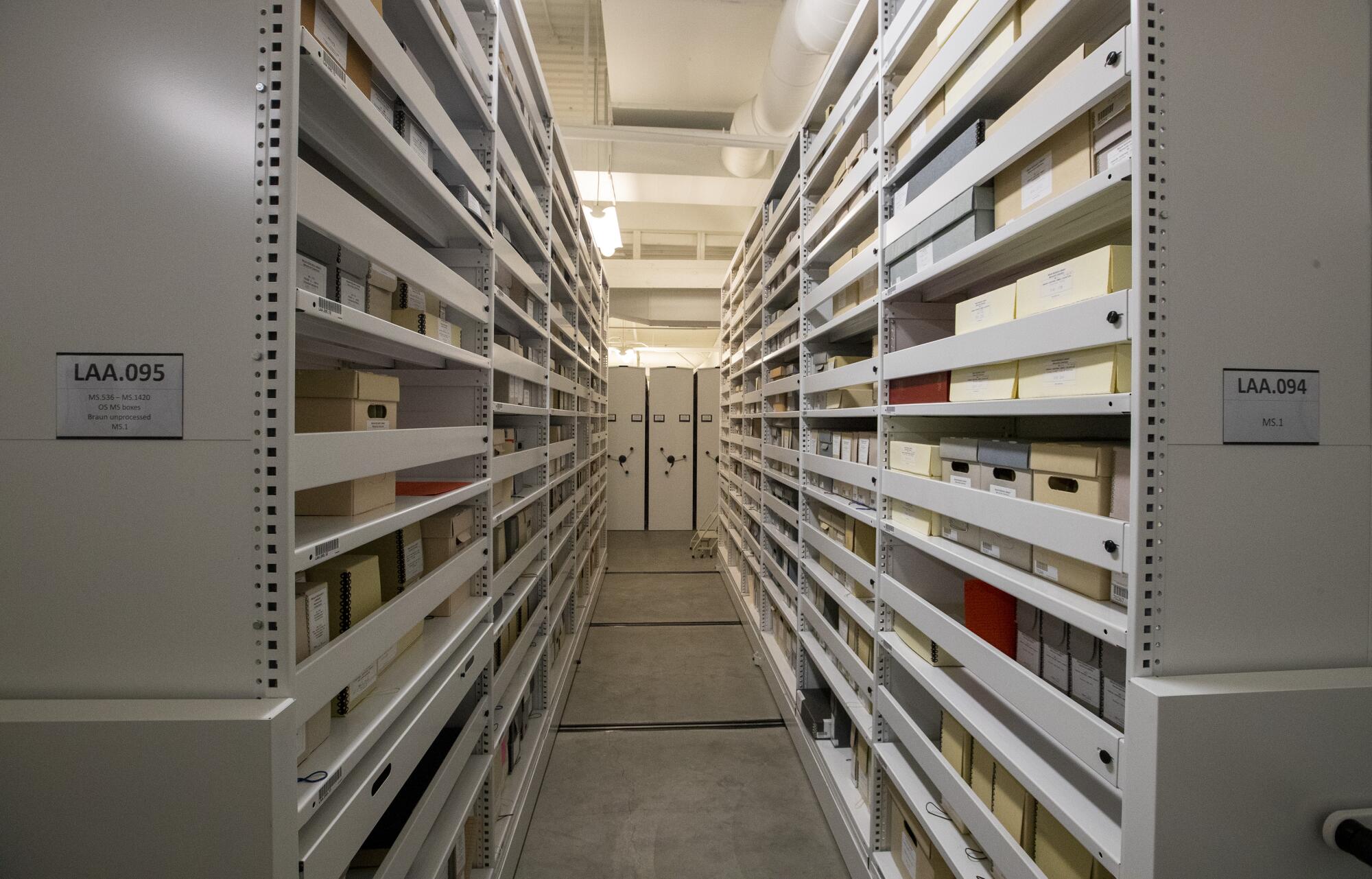
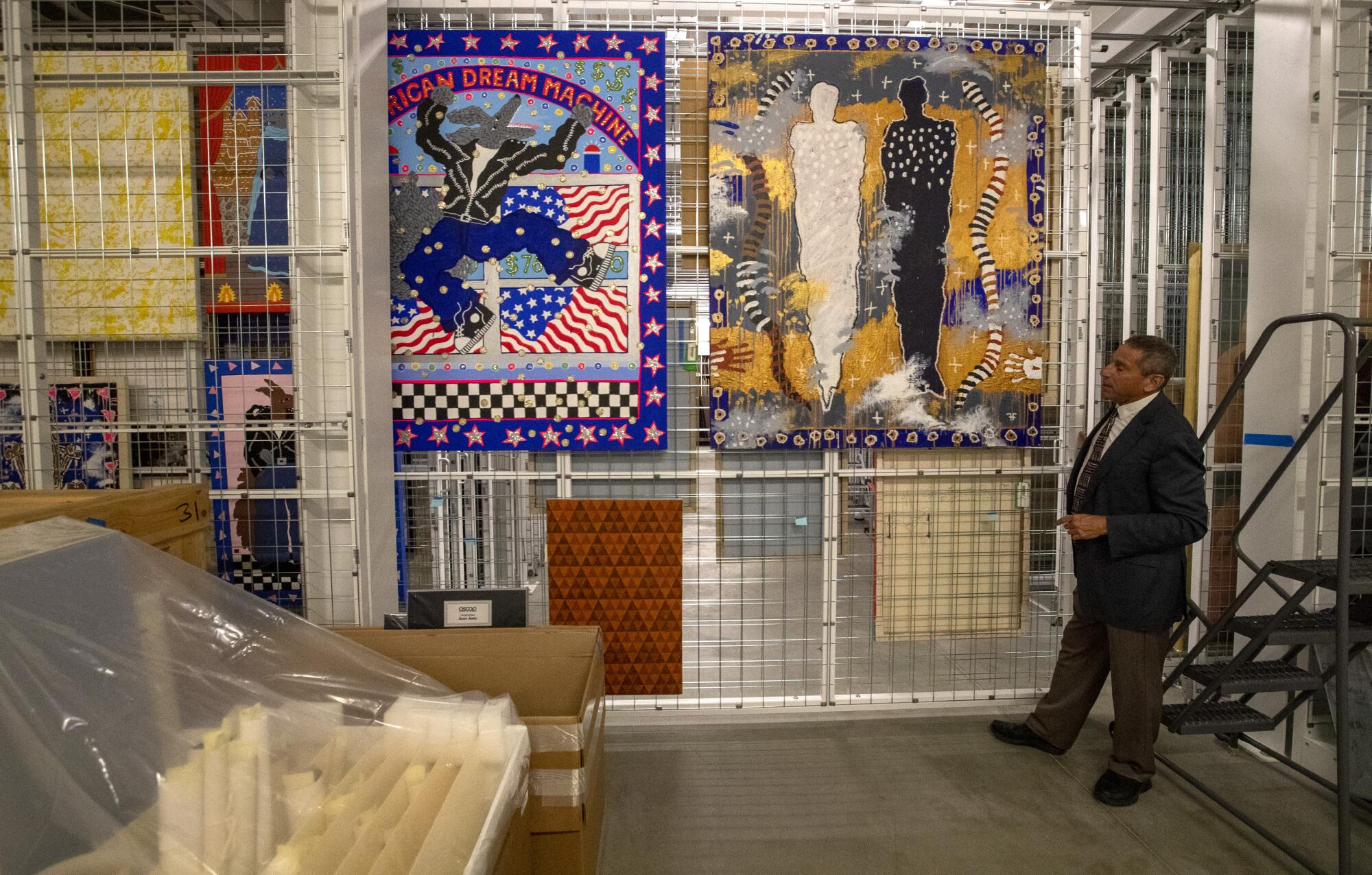
The Southwest Museum’s collection is now entirely moved into the Resources Center but for a small display of pottery. The Autry’s collection is about 90% relocated from on-site storage at the Griffith Park museum. That allows the Autry to create more exhibition space at the museum, though it currently lacks the funds to do so. Both collections are jointly referred to as the Autry’s Native Collections.
With the move complete, new challenges now arise for the Resources Center. Like where and how to store objects while also respecting Native beliefs and protocols. Even how to refer to storage is an issue. Many Native communities prefer the term “collections space” over “storage” because the latter implies lifelessness and inactivity. “Native objects are never inactive,” Horse Capture says.
Organization is a challenge. Some 14,000 baskets in the Southwest Museum collection were organized by region — Arctic, sub-Arctic, North West Coast — in a baskets storage room, with objects grouped by tribe. All of the Pomo baskets, from a Central California tribe, are stored together, for example. But according to Native community wishes, the Pomo baskets will now be stored with all the other Pomo pieces in the collection, regardless of media. Keeping these “living objects” together is important, Horse Capture says.
“Native objects have a certain amount of life and spirit to them — they’re going to be happier when they’re all together in the same community,” he says, adding that a multiyear reorganization is underway.
“But the challenge there — from a storage [standpoint] — is this facility was set up to do it one way and we’re now shifting around a little bit to reflect and respect that viewpoint,” Aron says. The Resources Center is “a work in progress,” he adds, but there are limits, particularly for a facility that doesn’t generate revenue. “We’re going to try, we’re going to move things around, we’re going to do it right,” he says. “But we cannot expand this building, we need to make things fit.”

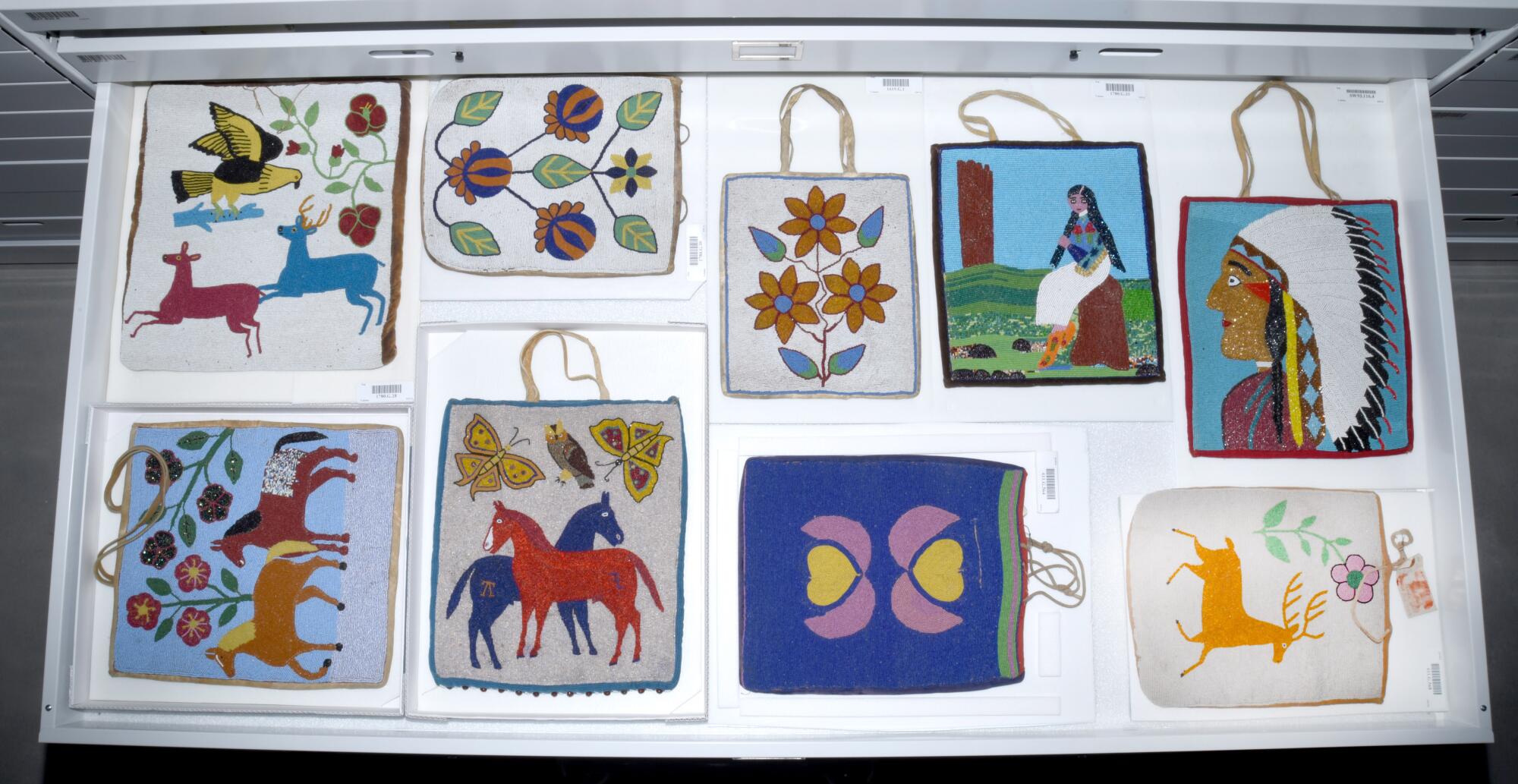
Conservation too is a compromise. Honoring tribal protocols means living objects shouldn’t be stored under plastic, for example, so that the objects can breathe. Conservators generally want to store woven hat baskets with the opening facing upward, so as to more evenly distribute weight across the crown. But some tribal consultants think it more important to store the hats with the opening facing down, as if they are being worn. The solution: Do the latter, but with custom support inserts developed by Autry staff.
Horse Capture points out that conventional Western conservation techniques also favor handling objects as infrequently as possible and, when necessary, with protective gloves on. But many Native communities feel “these objects deserve to be loved, they deserved to be touched with hands as opposed to gloves. Because there’s life to them,” he says. “What we’re doing is balancing conservation needs with cultural needs.”
According to its new policy on management of Native collections, the Autry has agreed not to display objects — including publishing photographs of them — without first consulting tribal representatives. This is especially important regarding sensitive images of ceremonial objects or funerary items, for instance, pictures that often were taken without the consent of those depicted.
“At the end of the day it’s about respect,” Horse Capture says. “And part of that is putting restrictions into what works can go out, what works can be used, what works can be visited and by whom.”
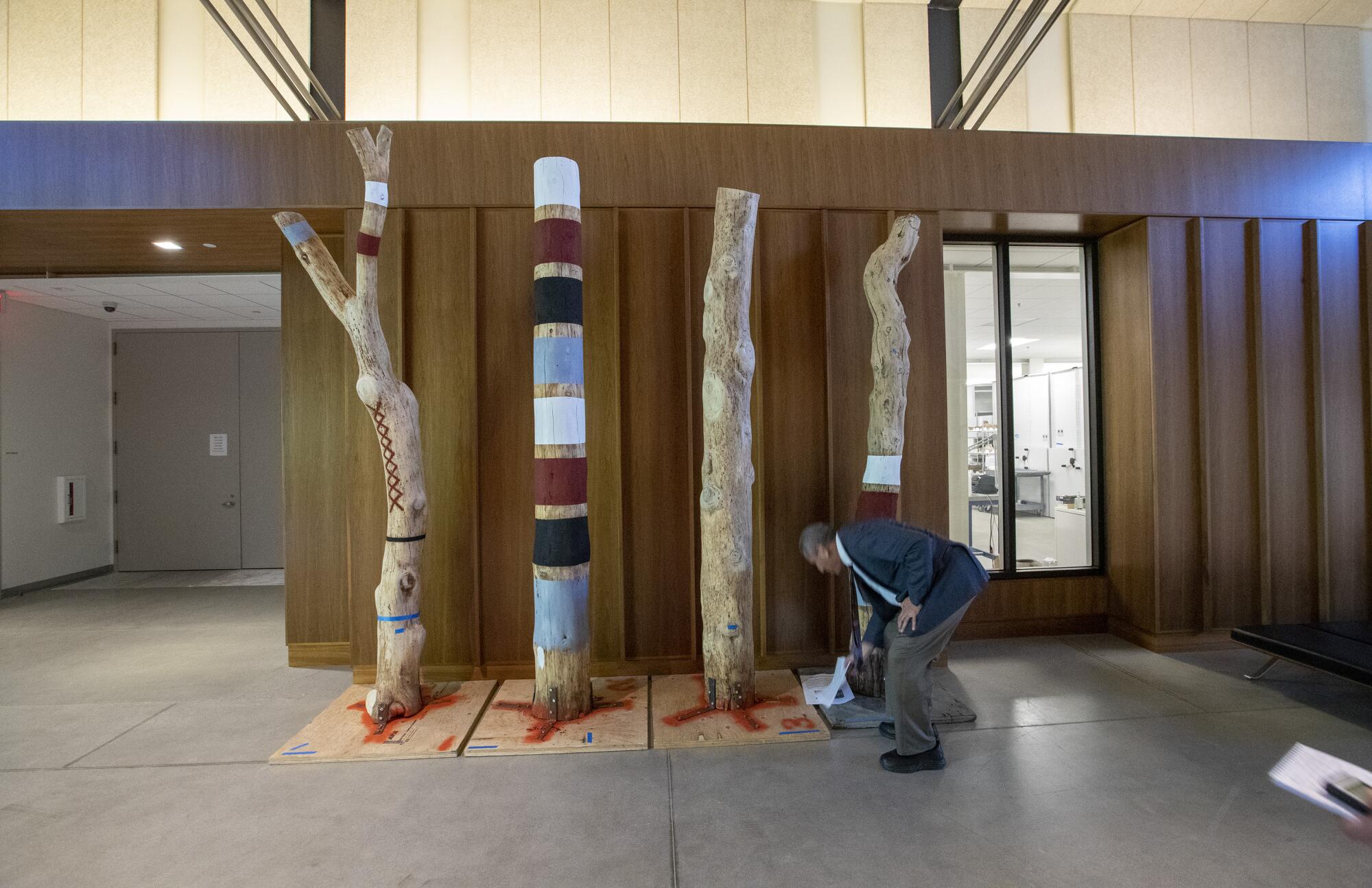
The Resources Center includes a community room, which looks out onto the ceremonial garden, for tribal representatives and others to reconnect with objects and have discussions with museum staffers, including about repatriation. The Autry adheres to federal and state legislation around the return of objects to their communities of origin, Aron says, but he stresses that’s just “the legal minimum of what we should be doing” toward rebalancing the relationship between Native communities and the museums that house their heritage.
Horse Capture says the community room is as much a space for education and ceremony as it is for discussing repatriation. It includes a changing room for ceremonial regalia and a cabinet of botanicals for “smudging,” a purification process.
Communications that transpire in this room, around a wide walnut table, are often learning expeditions, Aron says, with contemporary Native experts “schooling” the museum about objects, many of which were collected under dubious circumstances, or inaccurate collection records taken more than 100 years ago. In that sense, the Resources Center is also — especially — a forum for cultural understanding and reconciliation.
“Caring for the work, safely protecting and housing it, are the essential first steps. But if we stop there, we’ve failed,” Aron says. “That is really just the floor as opposed to the ceiling, which is: How do we facilitate the study of these [objects]? How do we connect Native communities with their ancestral creations? How do we display and exhibit? That’s the future.”
More to Read
The biggest entertainment stories
Get our big stories about Hollywood, film, television, music, arts, culture and more right in your inbox as soon as they publish.
You may occasionally receive promotional content from the Los Angeles Times.

